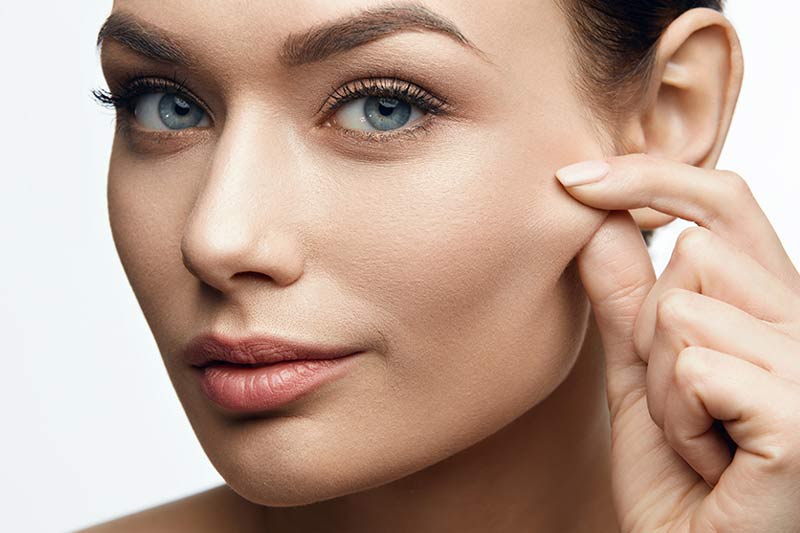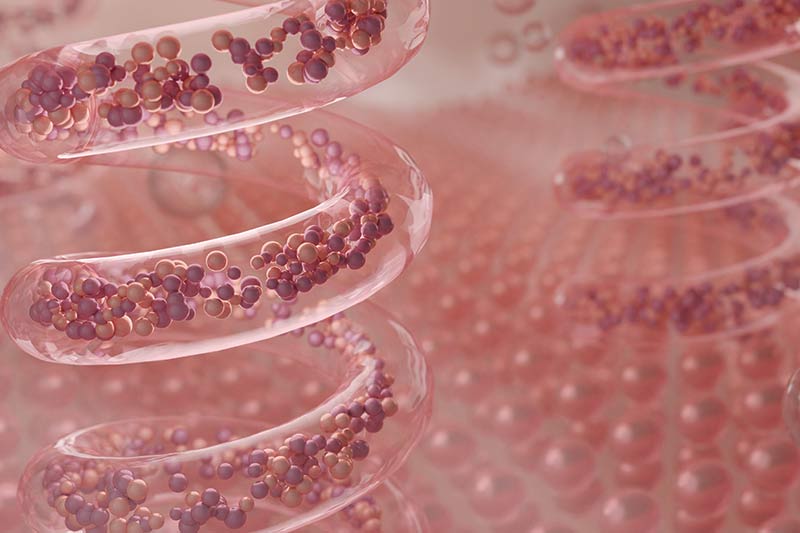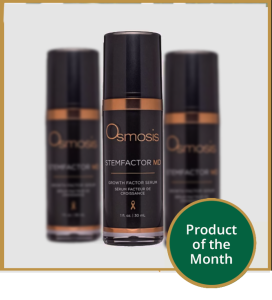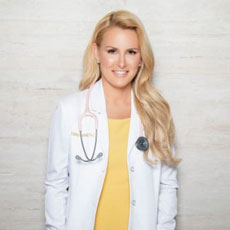As we age, the hallmarks of youth - smooth, glowing, and elastic skin - give way to wrinkles and other premature aging signs. Most of us wish to maintain youthful skin in mature age. Today, we know that is possible with lifestyle and cosmetic treatments that help preserve the primary skin-building constituents: collagen and elastin.
This article focuses on the less-known beauty compound, elastin. It explains elastin’s role in the body, what causes its degradation, and what we can do to maintain healthy elastin levels.

What Is Elastin?
Elastin is the second most abundant structural protein in the skin, after collagen, and a key component of many organs that require elasticity. It is present in elastic connective tissues, including the dermis and blood vessels. Most elastin forms before we are born, and its production stops in puberty, but it degrades very slowly in healthy tissues.
What Is Elastin Made Of?
Elastin is made of tropoelastin, a flexible amino acid structure primarily consisting of the following amino acids:
- Proline
- Glycine
- Valine
- Alanine
- Leucine
- Lysine
Tropoelastin is cross-linked with the amino acid desmosine to form the stable compound elastin.
What Is the Function of Elastin?
Elastin gives tissues and blood vessels elasticity and stretchiness. For example, it enables arteries, heart valves, and pulmonary tissues to stretch and contract to perform their normal physiological functions.
Elastin in the dermis helps the skin recoil to its original shape after being pinched, pulled, and stretched. It also helps heal wounds by reducing wound contractions and regenerating the skin.
Where Is Elastin Found?
Elastin is found in elastic tissues, including:
- Aorta
- Major blood vessels
- Myocardial tissues
- Lungs
- Ligaments
- Tendons
- Liver
- Skin
It is often interwoven with collagen fibers to give more elasticity and strength to organs and tissues.
Note: Learn more about the benefits of collagen for the skin.
Signs of Decreased Elastin
Elastin levels decline with age. The telltale signs of decreased elastin include:
- Wrinkles
- Dehydrated skin
- Loose skin
- Slower wound healing
- Vascular problems (e.g., high blood pressure, blood-clotting)
- Lung issues (e.g., shortness of breath, coughing, wheezing)
What Causes Lack of Elastin?
Elastin production declines or stops after puberty. Its reserves can be maintained or degraded, depending on several factors. The following factors commonly contribute to elastin degradation.
- Aging – Aging is the primary intrinsic factor causing the decline of all bodily functions, including those of elastin.
- Sun exposure – UV radiation is the leading external factor that damages the skin’s protective barrier, causing the breakdown of elastin and other skin constituents.
- Nutritionally poor diet – Processed foods and refined carbohydrates lead to sugar spikes, glycation, and inflammation, which deplete collagen and elastin.
- Smoking – Nicotine inhibits the activity of fibroblasts, cells that produce elastin.
- Unhealthy sleep patterns – Recent studies show circadian rhythms affect elastin production; they suggest late bedtime may disrupt various skin functions, including skin barrier function, sebum production, hydration, and elasticity.
- Stress – Stress disrupts various bodily processes, leading to hormonal imbalances and inflammation, which may impede collagen and elastin synthesis.
- Medical conditions – Diseases that reduce elastin reserves include cutis laxa, atherosclerosis, emphysema, and Williams-Beuren syndrome.
- Weight fluctuations –Sudden or frequent weight oscillations make the skin stretch and shrink; in the process, it loses its ability to retract and becomes saggy.
Note: Learn more about the main reasons for loss of skin elasticity.
How Can I Increase My Elastin?

Elastin has a very slow turnover, which means it doesn’t synthesize or repair itself. However, in healthy tissues, it is a long-lived. People can maintain its reserves and elastic, youthful skin for a long time with adequate lifestyle and cosmetic treatments.
Note: Find out what helps skin elasticity (25 tips and treatments).
1. Balanced Nutrition
Nutritionally-dense foods, such as fruits, vegetables, nuts, and seafood, give elastin the raw material it needs to maintain strength and durability. Antioxidants like vitamins C, E, and A and minerals zinc and copper neutralize free radicals that cause damage to elastin, helping to maintain its health.
2. Exercise
Exercise has a far-reaching positive impact on our well-being and youthful appearance. It improves various health parameters, including better blood flow, increased circulation, and stronger muscles. These factors may indirectly support elastin health.
3. Retinoids
Retinoids (vitamin A derivatives) are highly effective anti-aging ingredients in topical skincare products. They may increase fibroblast activity, stimulating elastin synthesis, and help remove damaged elastic fibers.
4. Topical Skin Care
Antioxidants and nutrients that help repair cells (e.g., retinol) in cosmetic products protect skin integrity and improve various skin issues, including loose skin. Sunscreen is an especially important step in daily skin care, inhibiting UV damage to collagen and elastin.
Incorporate medical-grade, premium-ingredient skincare products to increase hydration, improve the natural skin barrier, and preserve skin-building proteins or potentially stimulate their production.
Note: This article on elastin skin care will help you choose the best products for improved skin elasticity.
5. Dermal Fillers
Dermal fillers are cosmetic injectables that address loose skin and wrinkles caused by declining collagen and elastin. Semi-permanent fillers, such as Radiesse, are suitable for skin issues related to elastin loss because they are designed to stimulate the production of skin-building proteins.
6. Microneedling
Microneedling is a cosmetic treatment involving the use of a hand-held device that creates microinjuries on the surface of the patient’s skin to induce collagen and elastin synthesis. Studies show the treatment stimulates fibroblast activity and significantly increases the levels of tropoelastin, the precursor to elastin.
Conclusion
Elastin is the main contributor to skin elasticity. It is difficult to stimulate its synthesis, so most available products and treatments aim to preserve existing elastin. Follow the above advice to maintain your skin’s structural components and integrity, delaying the unwelcome signs of aging.




